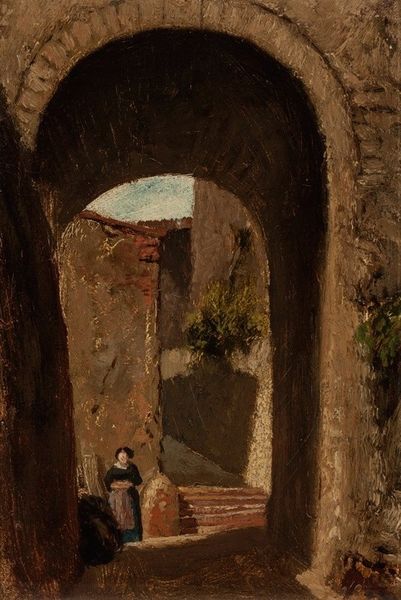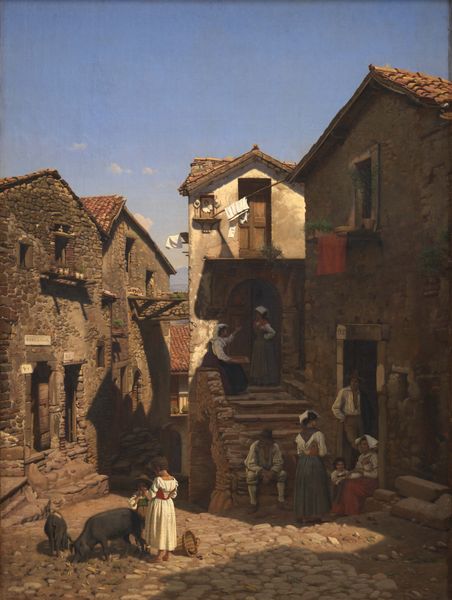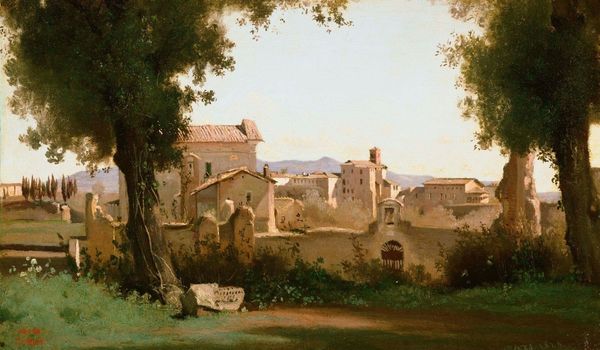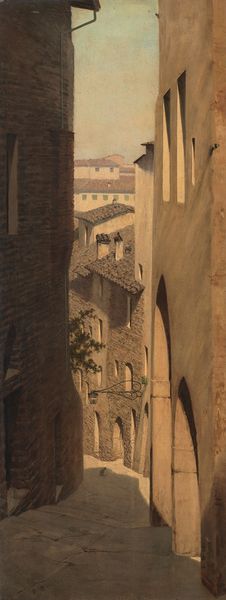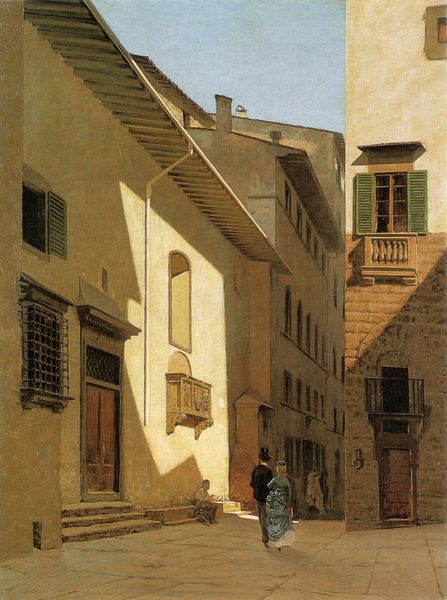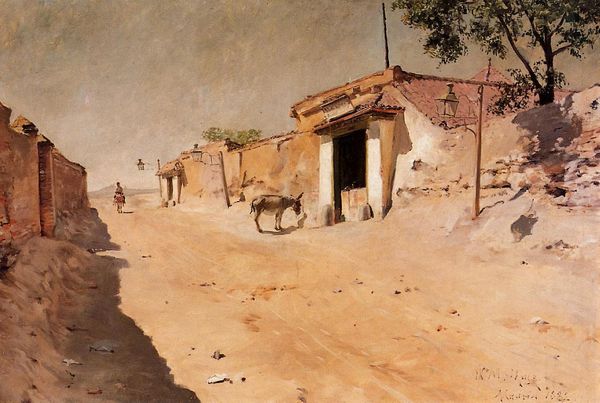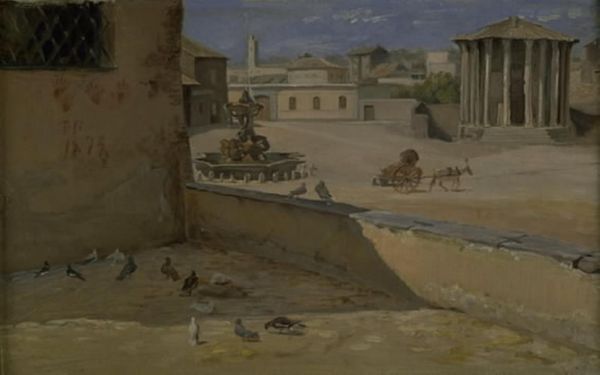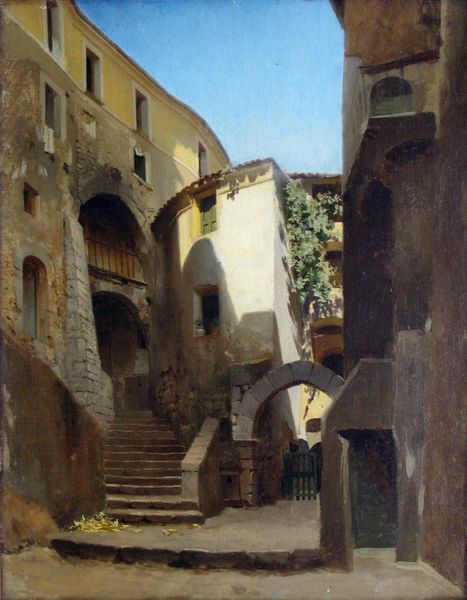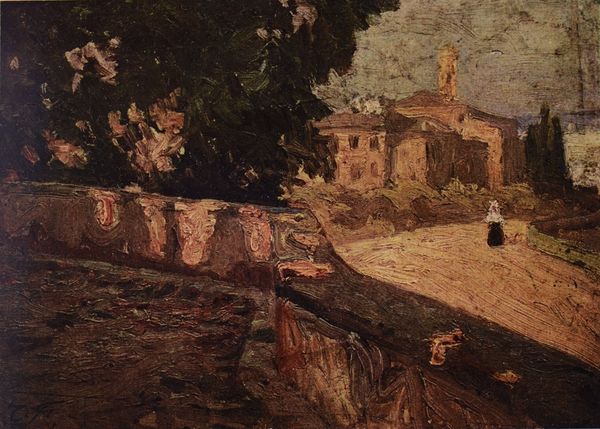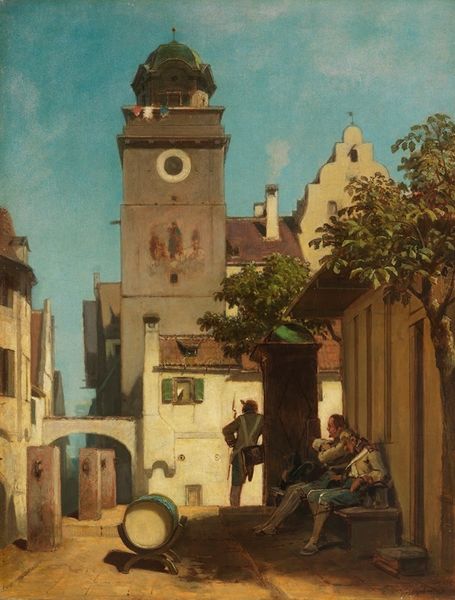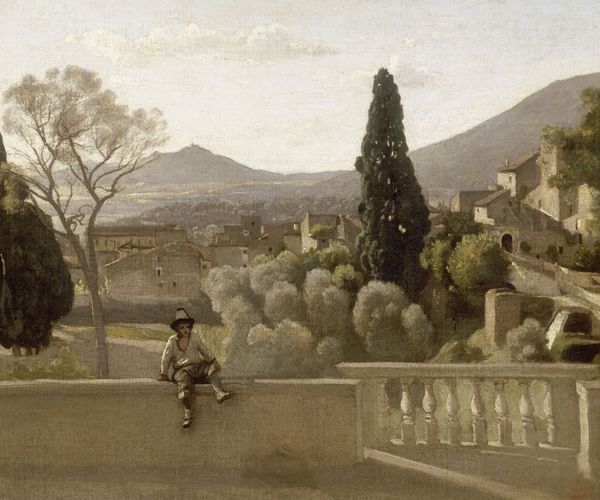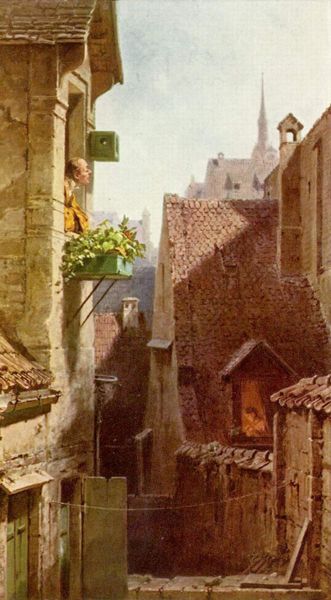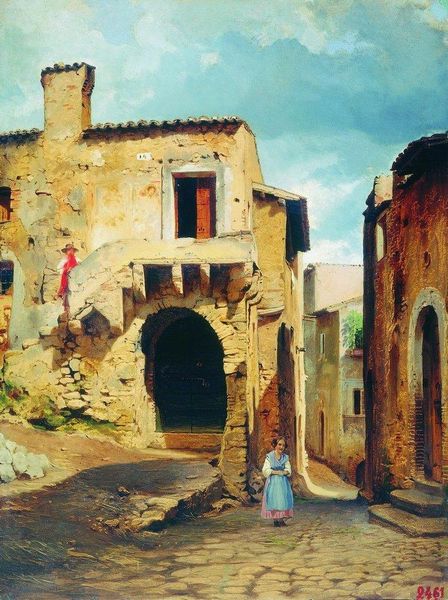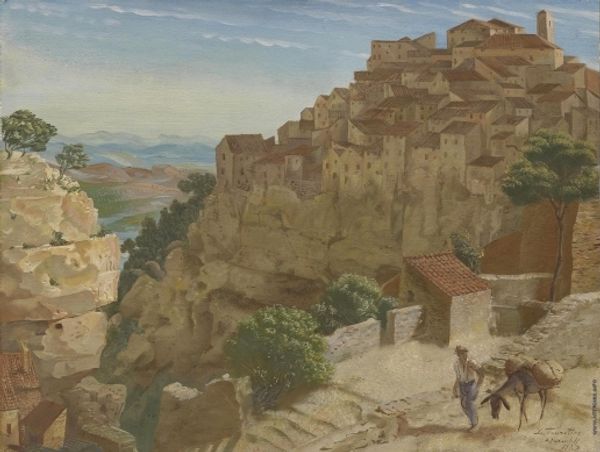
painting, oil-paint, paper
#
painting
#
oil-paint
#
landscape
#
paper
#
cityscape
#
genre-painting
#
italian-renaissance
#
realism
Dimensions: 35 cm (height) x 30.5 cm (width) (Netto), 44.4 cm (height) x 39.3 cm (width) x 6.3 cm (depth) (Brutto)
Curator: "Street Scene in Subiaco, Italy" by Julius Friedlænder, dating from 1844. A quiet scene, wouldn’t you say? Editor: Yes, profoundly still. The heavy masonry practically breathes a stillness that suggests an inescapable weight of labor on the town. What medium did Friedlænder use? Curator: It’s an oil painting on paper. It’s interesting, isn’t it, how the artwork, despite its focus on realism, seems to portray something beyond the surface level— a feeling of timelessness? This ties in with the Romantic nationalist movement of the time, a longing for an idealised past. Friedlænder seems to situate the architecture and the figures within a broader Italian identity, rooted in classical ideals. Editor: Interesting, particularly because you note it’s on paper. I see an artist then testing how everyday material constraints shape something like national identity. He is imbuing humble, available paper with the task of elevating Italian architectural form into art. Note too the central placement of that structure -- is it stone? – which is neither grand architecture nor simple housing but some sort of civic combination of the two, like shared material between all in the village? Curator: I think you have a point; it transcends a purely documentary function. There’s definitely a Romantic vision at play, subtly glorifying the traditional lifestyle. In terms of gender, we can observe the subtle presence of female figures, quietly observing—reinforcing the conventional roles assigned to women in the public sphere in those days. The composition frames their marginalisation in relation to this solid masculine structure, whatever it is – town hall, monument? The positioning forces a reading about labor, gender and tradition. Editor: Indeed, look at the way the muted color palette and textured surfaces invite the viewer to contemplate the material realities of life in this place. Notice how much bare ground shows. Friedlænder seems keen to draw out all these connections between land, building and work and identity in some way. Curator: Ultimately, this work, though seemingly a simple depiction, touches upon significant intersections of identity, history, and representation in 19th-century art. Editor: A perfect reminder that even quiet paintings can invite deep discussion about material conditions and their meaning.
Comments
No comments
Be the first to comment and join the conversation on the ultimate creative platform.
